

Fire service historian and author
Roger Mardon

www.romar.org.uk
© Copyright Roger Mardon
www.romar.org.uk
All rights reserved

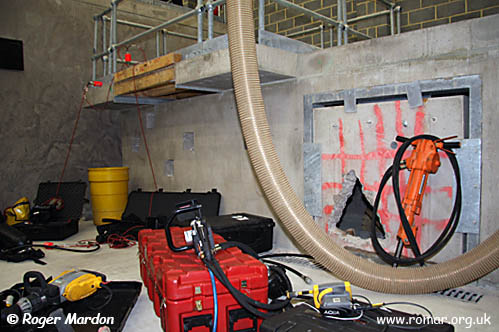
A number of replaceable panels are provided in the structure, such as the concrete panel surrounded by a metal frame seen here. Cutting and drilling techniques can be practised on these and they can be easily replaced when of no further use.
Triangular-
The large diameter flexible hose is part of the dust extraction system.
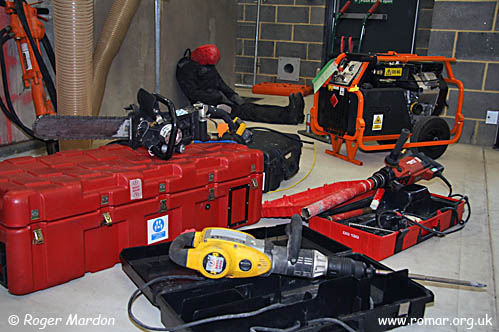
Some of the equipment available to the team.
The wheeled unit in the orange frame at the back is a generator. In front of that is a core drill, used for drilling holes through which a camera and listening device can be inserted.
The chain saw on the large red box has diamond blades and will cut through concrete.
The yellow tool is a drill.
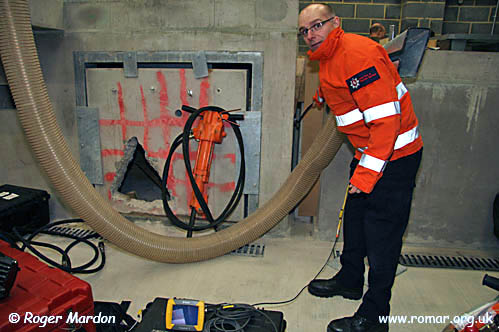
Here USAR technician Jamie Muddle demonstrates the use of a snake-
The lens can be connected to a clip which in turn can be attached to the operator’s finger for an alternative method of use.
To see the search-
The fluorescent orange objects are listening devices that can be placed on or attached to collapsed buildings to detect signs of life. The one on the left is attached by magnet to the metal whilst the one on the right is attached to the timber by a spike.
By analysing the strength of the signals from several devices, the location of the sound source can be pinpointed.
Search dogs are employed to recognise and find the scent of people who are still alive in the rubble. To them it is just a doggy game with a reward at the end of it.
When searching they wear a harness with a light and a bell so that they can be both seen and heard.
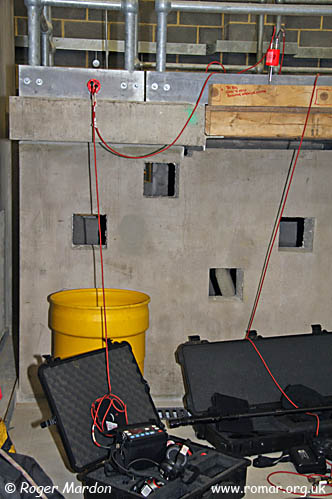
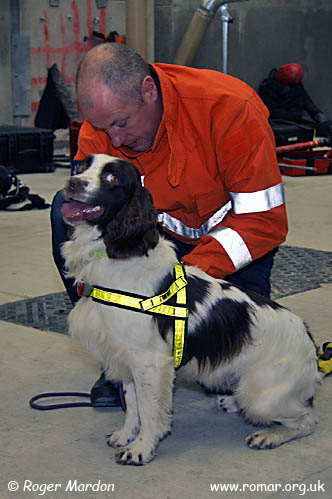
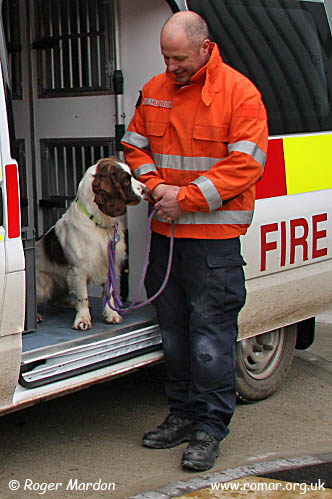
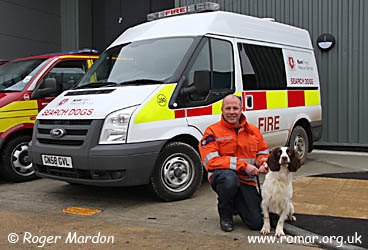
When in transit the dogs are carried in this specially-
Search dogs need a high prey drive and Murphy, seen here with handler Dave Hudson,
is a 3-
Previous
To see Kent's USAR team in action on exercise, click here.
Before the events of 9/11 in America and the Government’s New Dimension initiative, Kent was one of thirteen UK fire brigades to have established an international search and rescue team. Afterwards, they expanded their remit to respond to collapsed structure incidents within the UK.
Kent’s temporary USAR unit was mobilised on 6 June 2004 to a gas explosion in Faversham that completely destroyed two terraced houses and damaged 22 others. Further details and pictures of this incident can be seen on the Faversham Explosion pages of this web site.
The Kent USAR team is funded by the Government’s New Dimension or National Resilience
Programme and is one of 20 teams set up across the country to respond to major incidents
on a national scale. It can also be used locally to assist in life-
The objective is to be able at any time to deploy a cadre of 10 USAR technicians, with their vehicles and equipment, anywhere within a radius of 70 miles in about 2 hours.